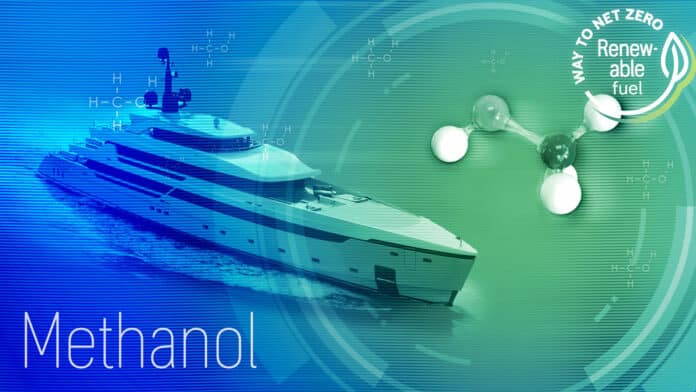Rolls-Royce and Italian yacht builder Sanlorenzo have announced they will join forces to develop and build a large motor yacht equipped with a methanol engine propulsion system that can run on “green” methanol in a carbon-neutral way.
At the Cannes Yachting Festival in southern France, Rolls-Royce and Sanlorenzo unveiled the joint project to pave the way for the yacht industry to move toward sustainability. It seems the two companies have already established the broad outlines of the agreement, under which they will build more environmentally-friendly vessels ranging between 40 and 70 meters in length. Powered by two mtu methanol engines based on Rolls-Royce Power Systems’ Series 4000, the first Sanlorenzo yacht is expected to undertake its maiden voyage in 2026.
“We’re making shipping more environmentally friendly and easier on the climate, and this agreement is a big step forward in the right direction,” said Denise Kurtulus, Vice President of Global Marine at Rolls-Royce Power Systems.
“Synthetic methanol, produced using electricity generated from renewable sources, is the obvious fuel of the future for many maritime applications – not least yacht propulsion,” he said. This is because methanol is a liquid that is easy to manage, and people are already used to handling it because it is already available in ports today.
Green methanol is a sustainable solution to kick start the reduction of carbon emissions from the maritime industry that’s because it is climate-friendly and carbon-neutral because it is produced using solar or wind power. The first stage is to take hydrogen and synthesize it into methanol (CH3HO) using carbon and oxygen from the air. Carbon in the form of CO2 is released into the air during combustion – but no more than was taken from it during the production of the fuel. As a result, the cycle is carbon-neutral.
The plan is to build a large Sanlorenzo luxury yacht tailored to the new type of propulsion system and its requirements. There will be challenges, though, as methanol’s energy density is around 50% below that of diesel. This means the fuel tanks need to be about twice as big to give the vessel the same range as diesel propulsion. Safety requirements happen to be potentially lower than with other fuels and technologies – because methanol is non-toxic.
